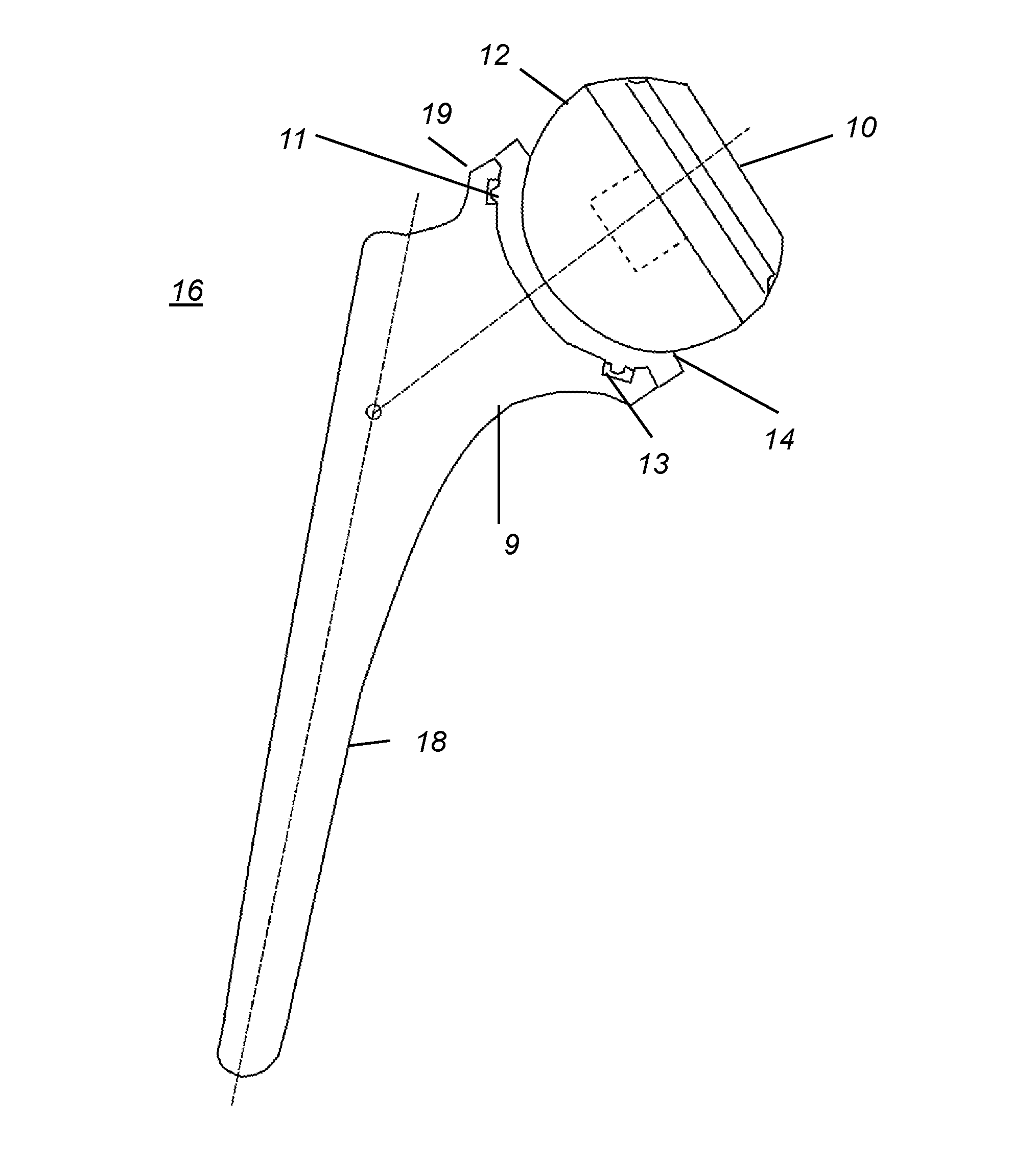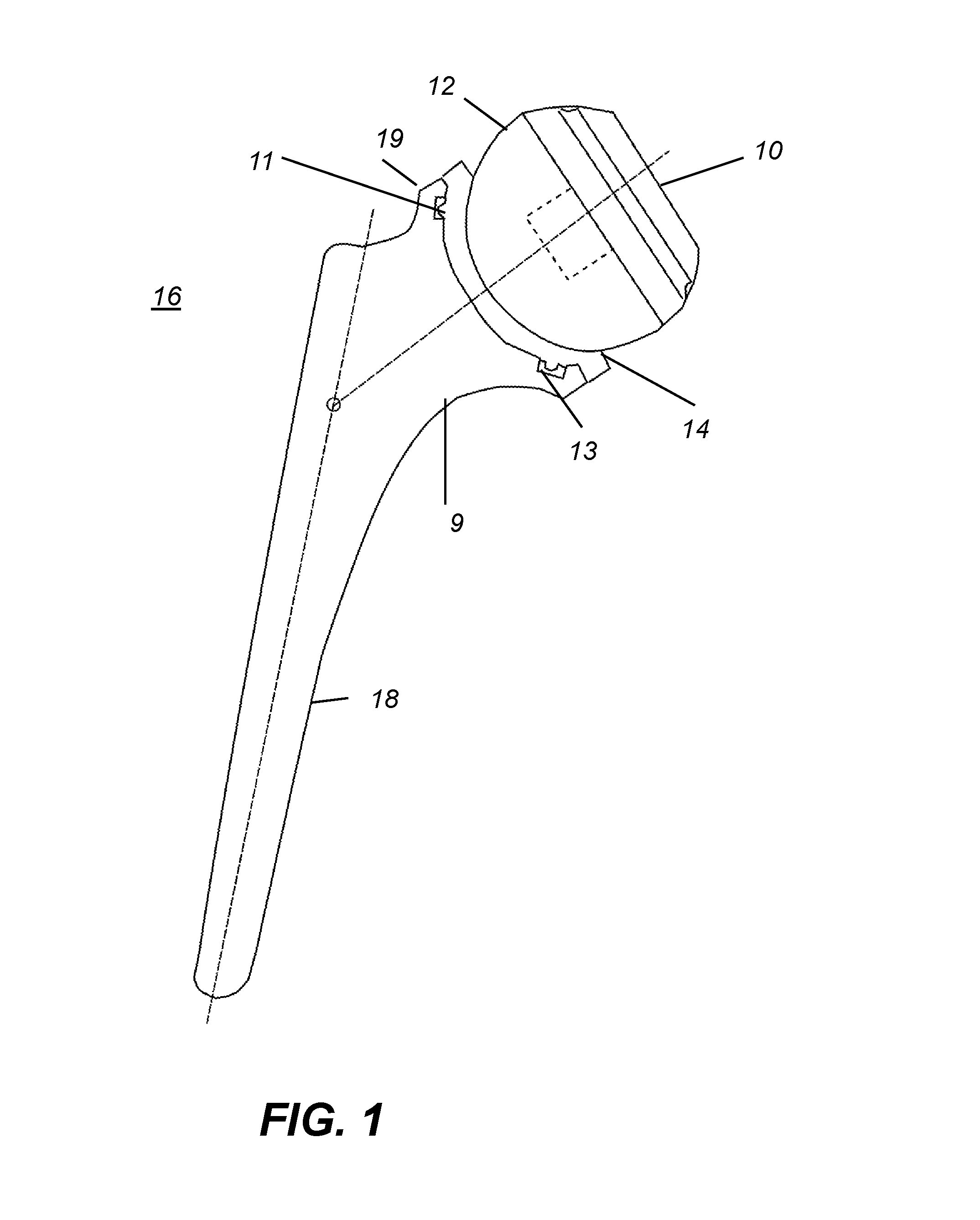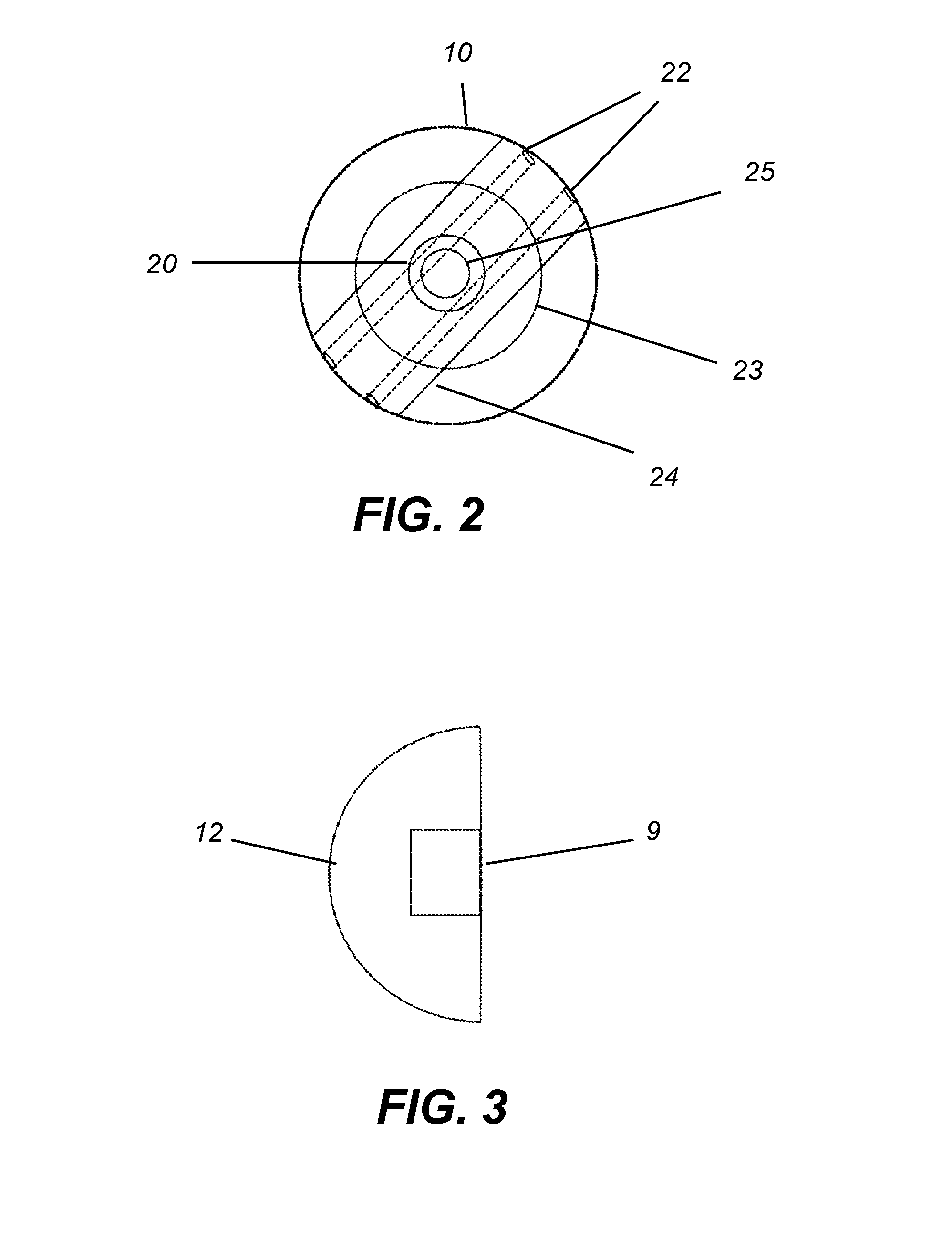Reverse total hip replacement
a total hip and femoral technology, applied in the field of hip replacement arthroplasty, can solve the problems of increasing the risk of femoral neck fracture, affecting the function of the hip joint, and most likely failing to implant this device into the hip joint, so as to achieve the effect of reversing the biomechanics and less for
- Summary
- Abstract
- Description
- Claims
- Application Information
AI Technical Summary
Benefits of technology
Problems solved by technology
Method used
Image
Examples
Embodiment Construction
[0047]The present description is directed in particular to elements forming part of, or cooperating more directly with, apparatus in accordance with the invention. It is to be understood that elements not specifically shown or described may take various forms well known to those skilled in the art.
[0048]Referring to the Figures, wherein like numerals indicate like parts throughout the several views, attention is first directed to FIG. 1 in which is shown the inventive hip replacement implants as they would articulate in the human hip joint. The femoral component 16 comprises a femoral stem 18, shown in FIG. 1, which would be placed into the human femoral canal and the cup portion 19, shown on FIG. 1, which accepts a saucer shaped spacer 14. The femoral component 16 and spacer 14 replaces the femoral neck and head of a human hip. FIG. 1 shows the femoral component 16 with a shaft 18 to neck 9 angle of 140 degrees. This femoral component shaft to neck angle may vary from 120 to 140 de...
PUM
 Login to View More
Login to View More Abstract
Description
Claims
Application Information
 Login to View More
Login to View More - R&D
- Intellectual Property
- Life Sciences
- Materials
- Tech Scout
- Unparalleled Data Quality
- Higher Quality Content
- 60% Fewer Hallucinations
Browse by: Latest US Patents, China's latest patents, Technical Efficacy Thesaurus, Application Domain, Technology Topic, Popular Technical Reports.
© 2025 PatSnap. All rights reserved.Legal|Privacy policy|Modern Slavery Act Transparency Statement|Sitemap|About US| Contact US: help@patsnap.com



